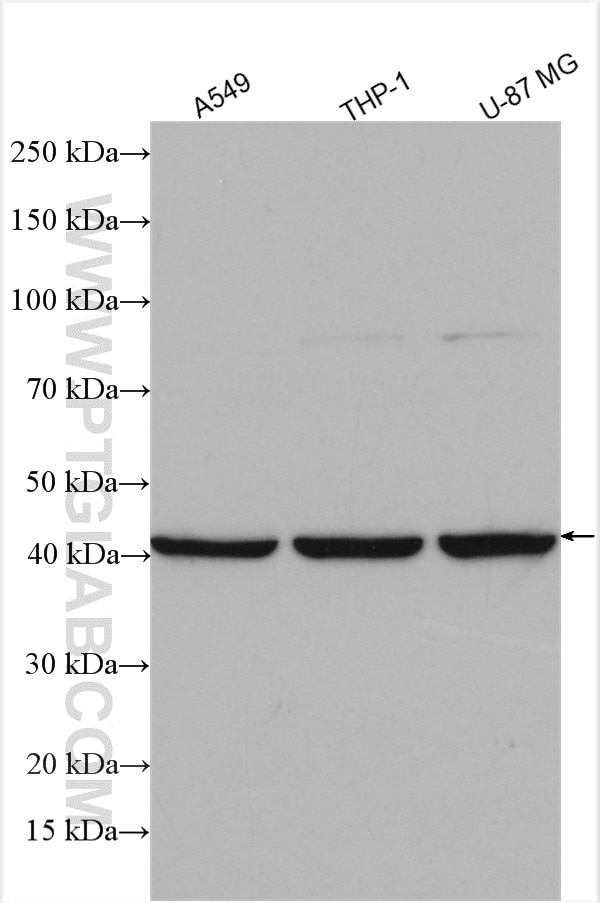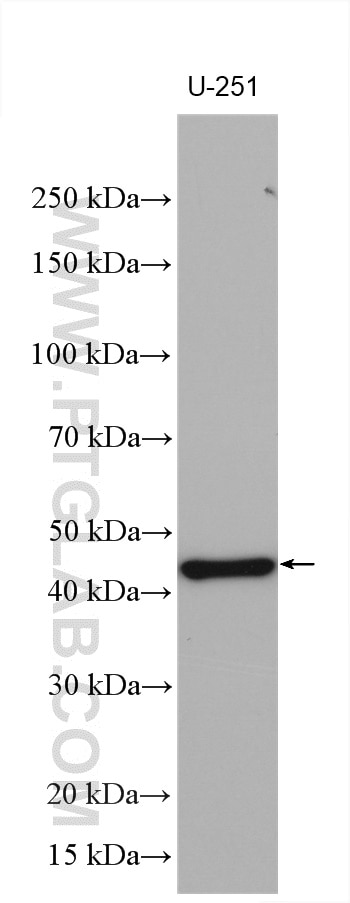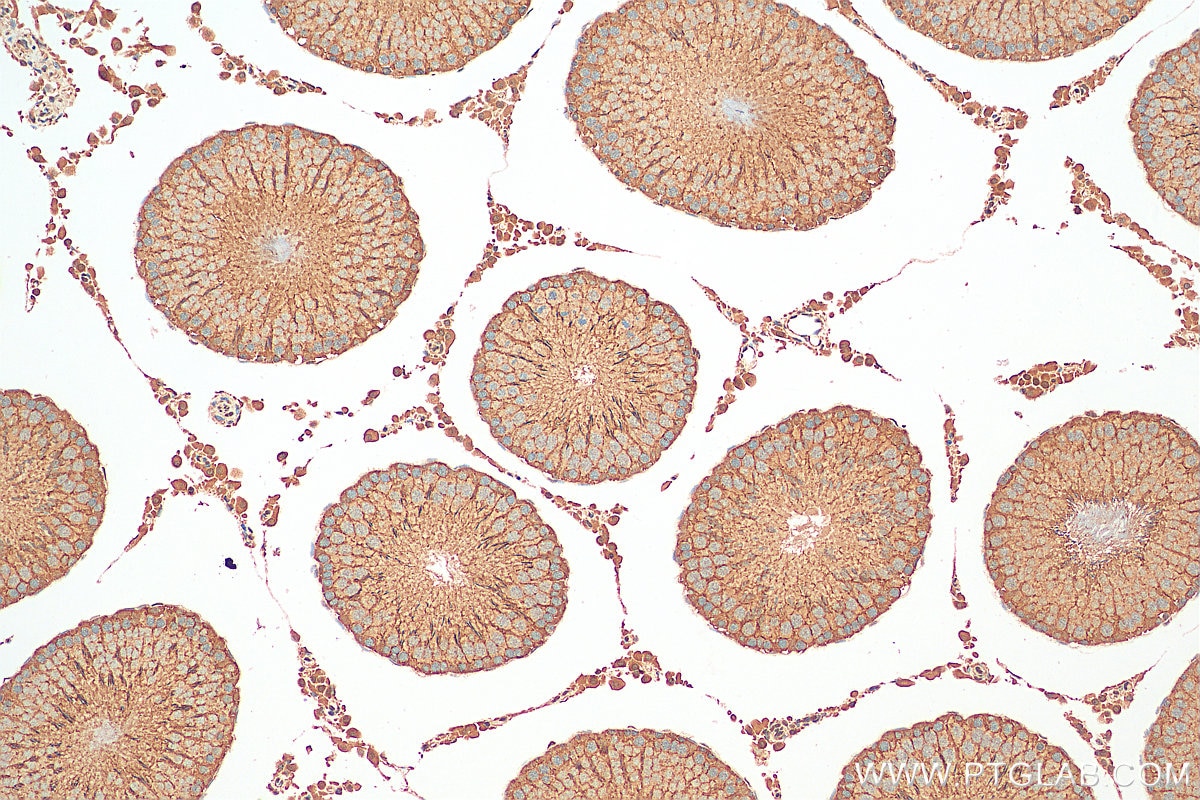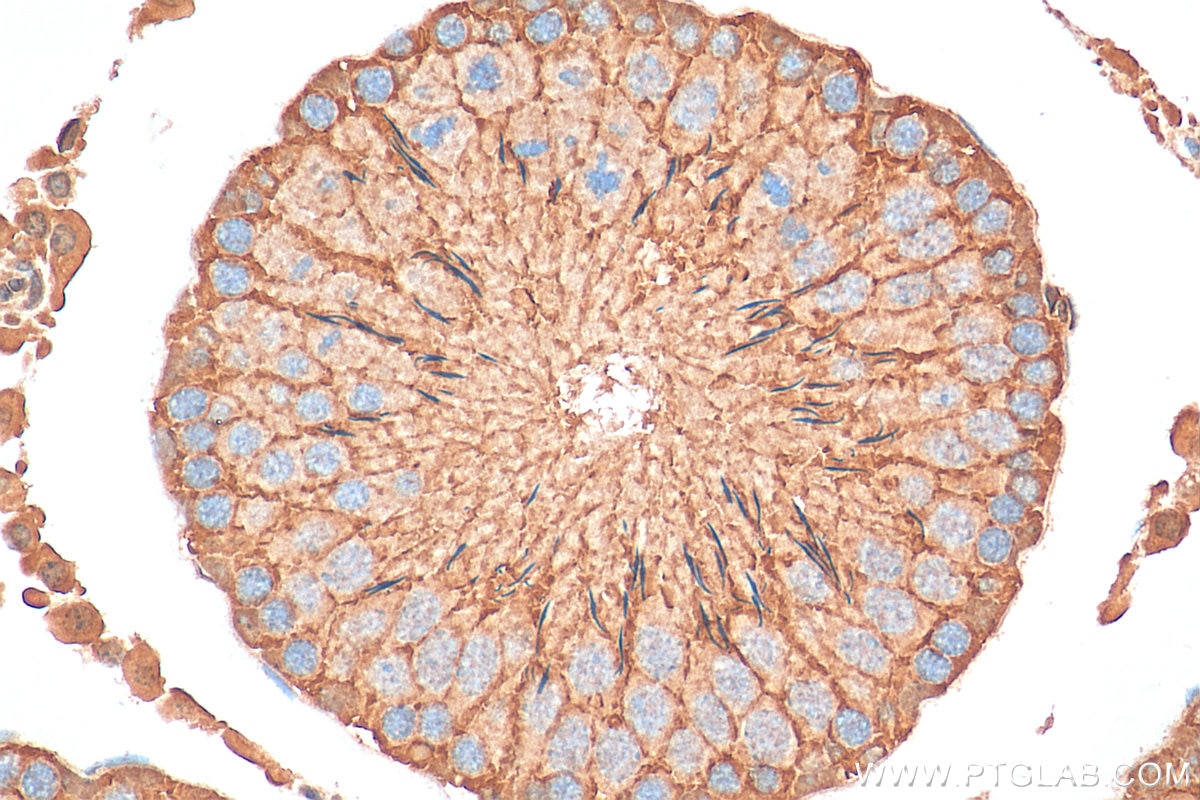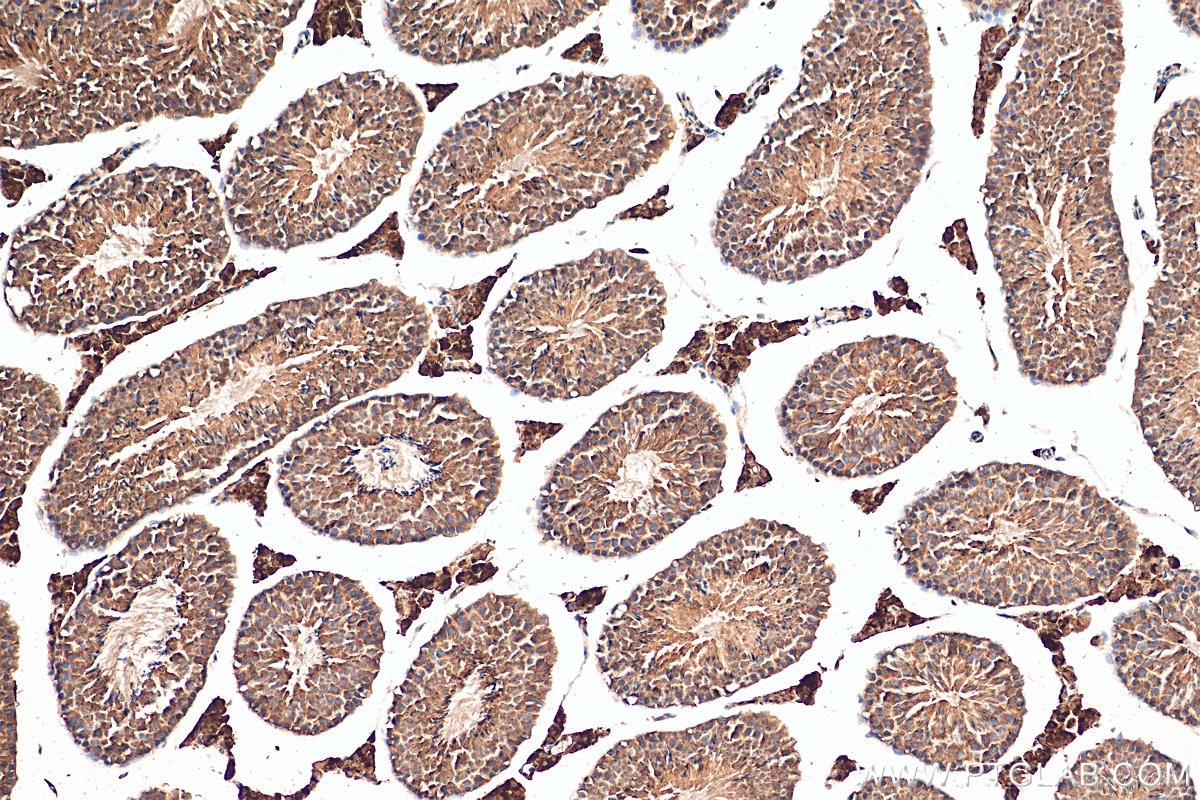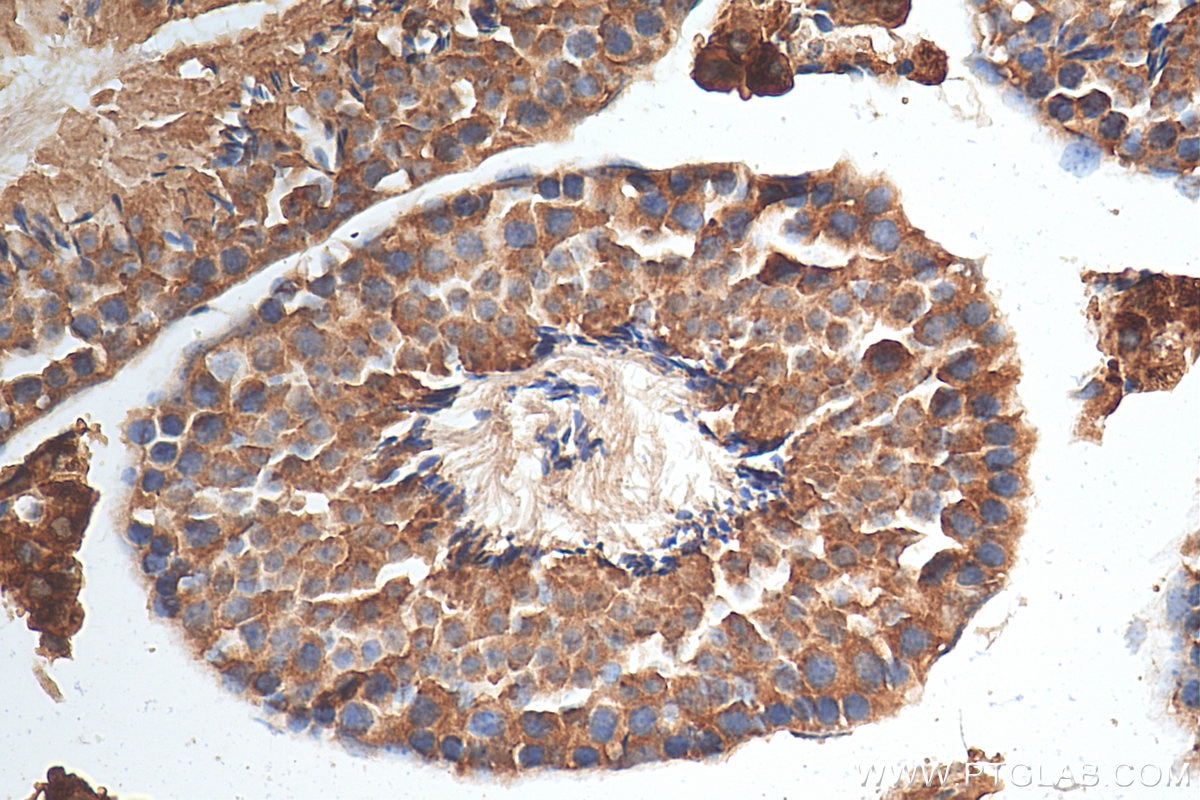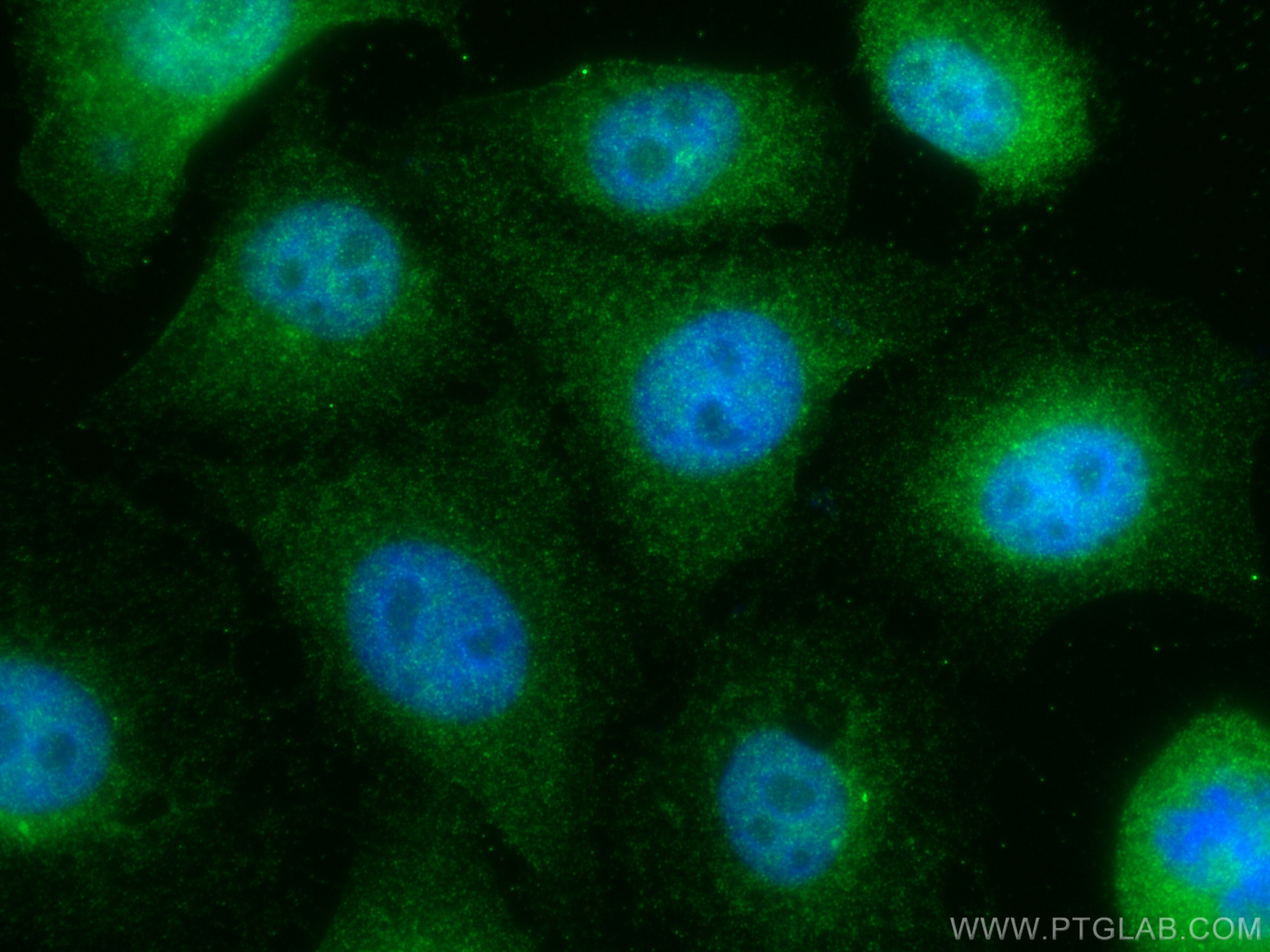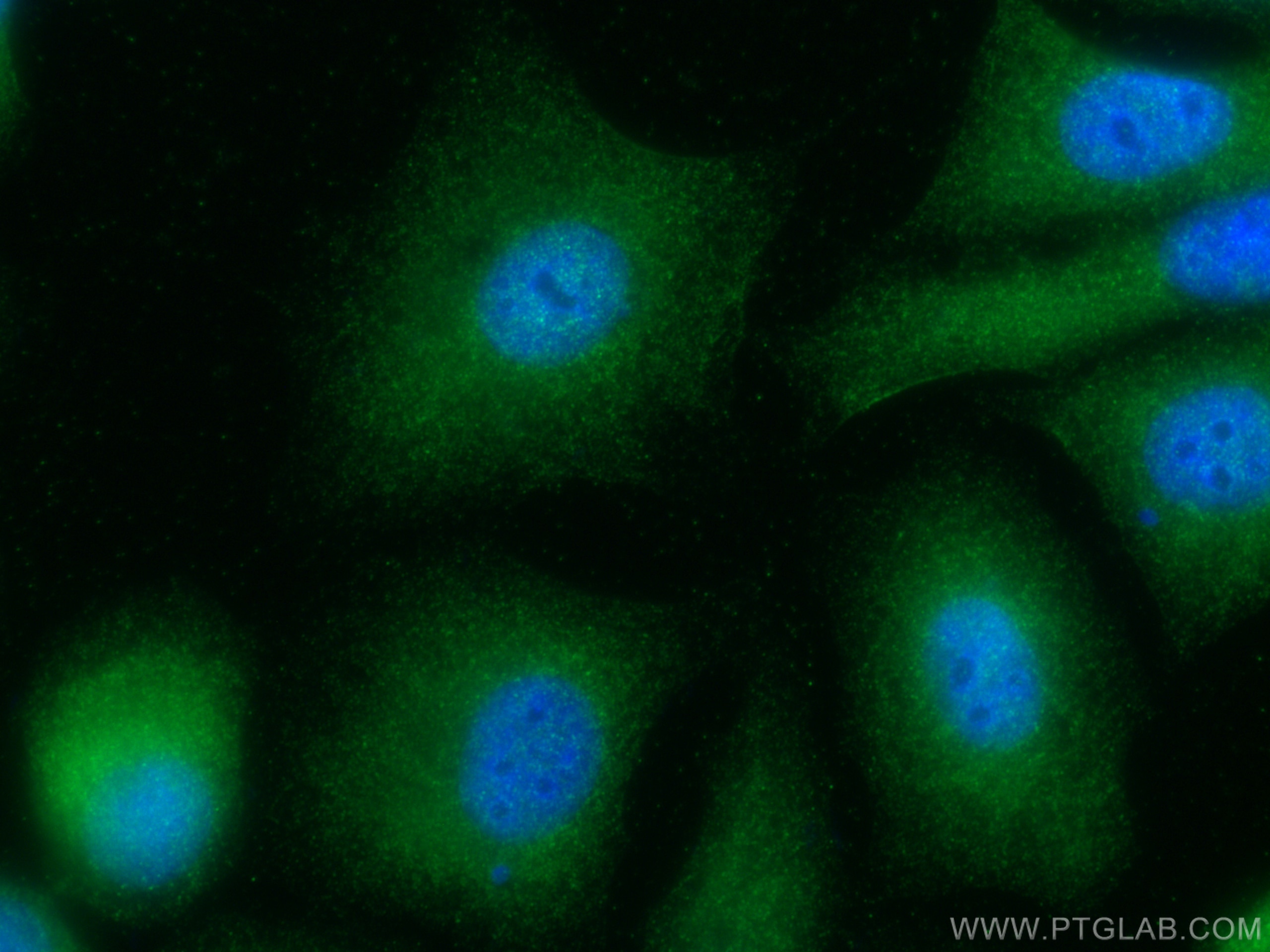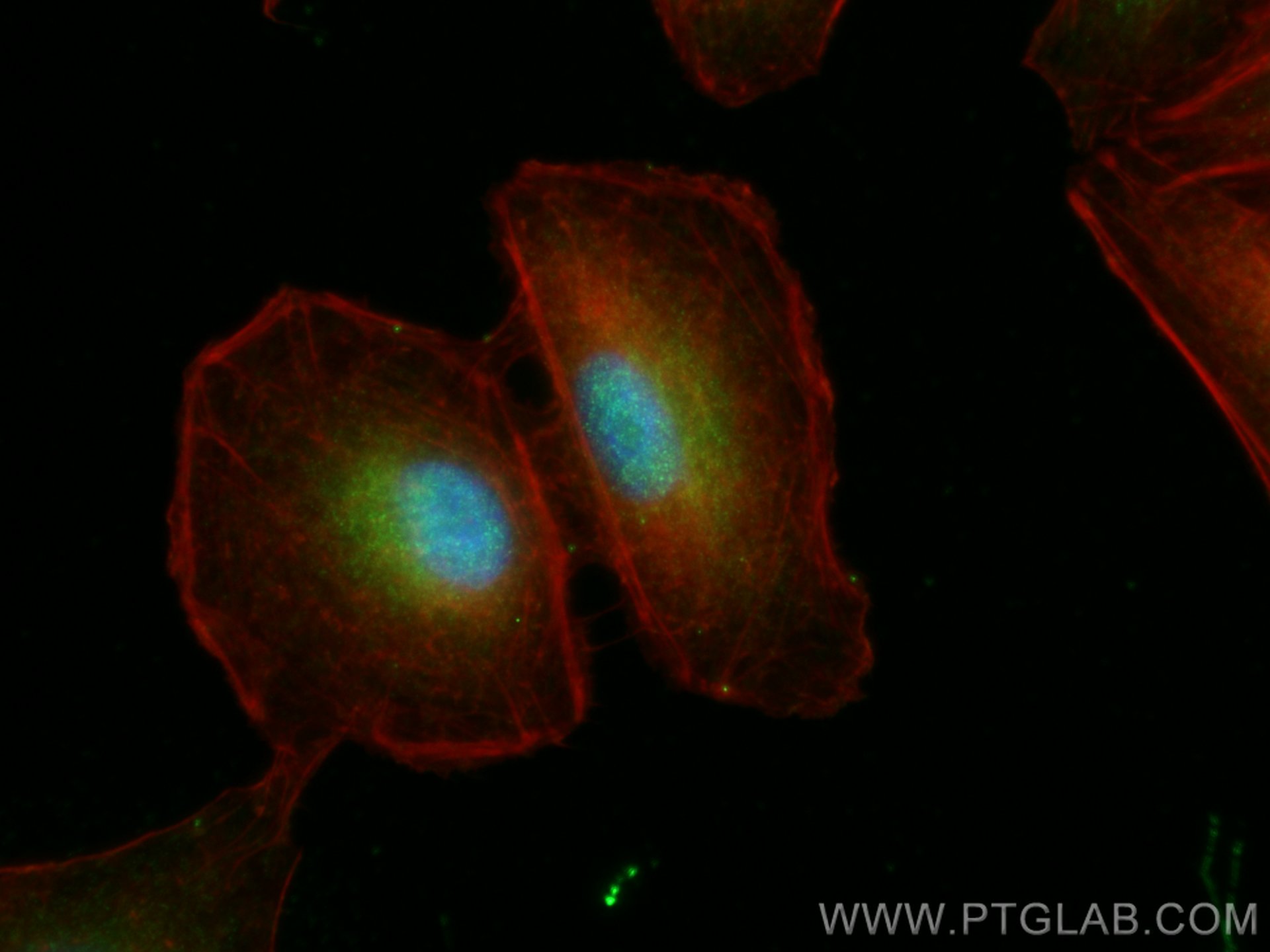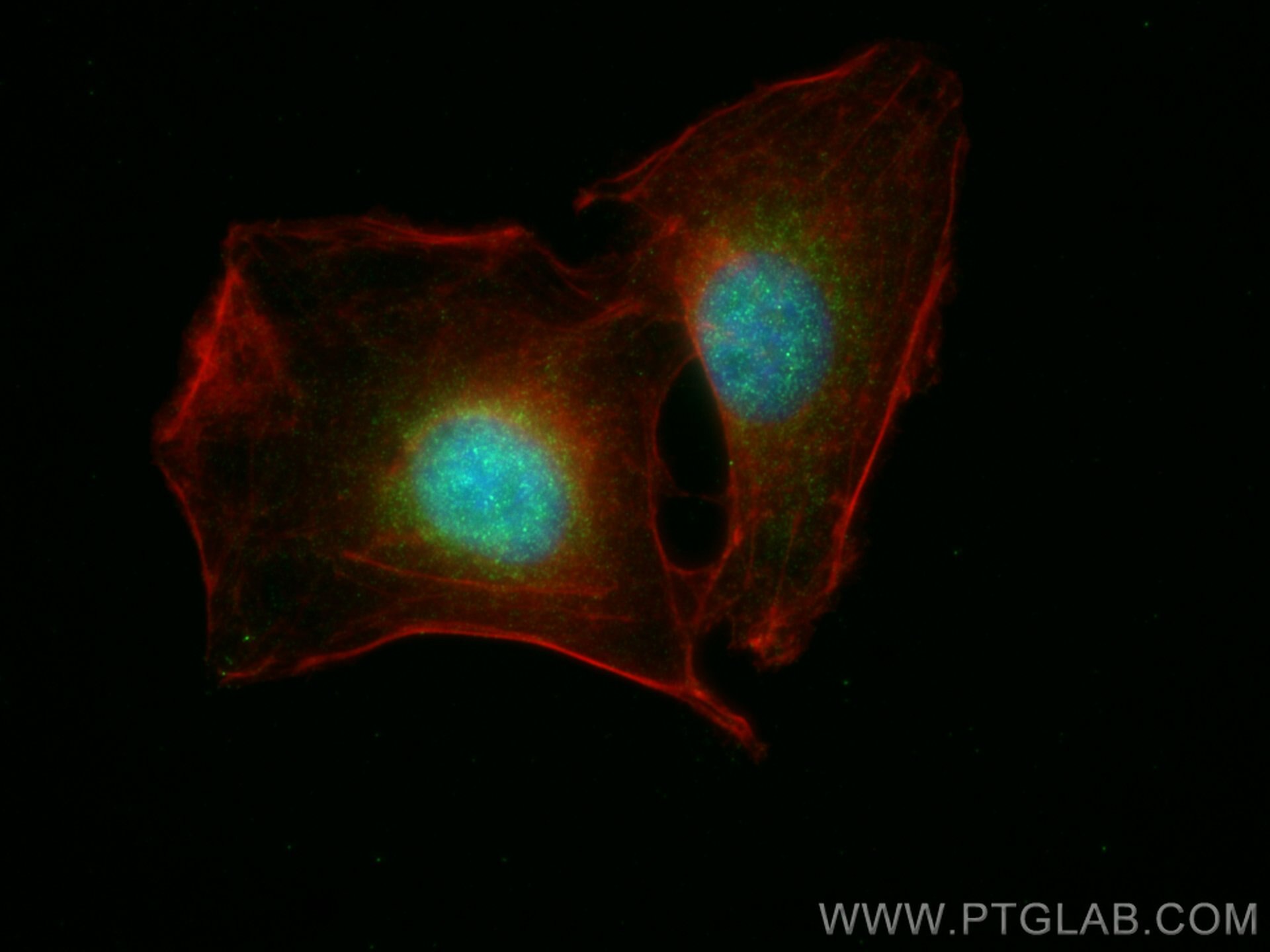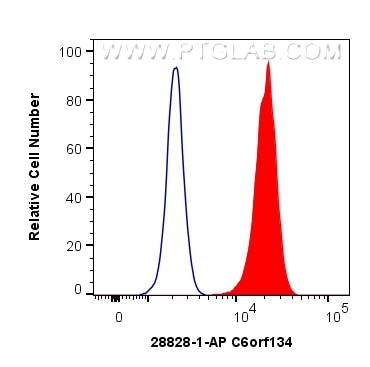- Phare
- Validé par KD/KO
Anticorps Polyclonal de lapin anti-ATAT1
ATAT1 Polyclonal Antibody for WB, IHC, IF/ICC, FC (Intra), ELISA
Hôte / Isotype
Lapin / IgG
Réactivité testée
Humain, rat, souris
Applications
WB, IHC, IF/ICC, FC (Intra), ELISA
Conjugaison
Non conjugué
N° de cat : 28828-1-AP
Synonymes
Galerie de données de validation
Applications testées
| Résultats positifs en WB | cellules A549, cellules MG U-87, cellules THP-1, cellules U-251 |
| Résultats positifs en IHC | tissu testiculaire de rat, tissu testiculaire de souris il est suggéré de démasquer l'antigène avec un tampon de TE buffer pH 9.0; (*) À défaut, 'le démasquage de l'antigène peut être 'effectué avec un tampon citrate pH 6,0. |
| Résultats positifs en IF/ICC | cellules A549, |
| Résultats positifs en FC (Intra) | cellules A431, |
Dilution recommandée
| Application | Dilution |
|---|---|
| Western Blot (WB) | WB : 1:500-1:2000 |
| Immunohistochimie (IHC) | IHC : 1:50-1:500 |
| Immunofluorescence (IF)/ICC | IF/ICC : 1:50-1:500 |
| Flow Cytometry (FC) (INTRA) | FC (INTRA) : 0.40 ug per 10^6 cells in a 100 µl suspension |
| It is recommended that this reagent should be titrated in each testing system to obtain optimal results. | |
| Sample-dependent, check data in validation data gallery | |
Applications publiées
| KD/KO | See 2 publications below |
| WB | See 7 publications below |
| IF | See 3 publications below |
Informations sur le produit
28828-1-AP cible ATAT1 dans les applications de WB, IHC, IF/ICC, FC (Intra), ELISA et montre une réactivité avec des échantillons Humain, rat, souris
| Réactivité | Humain, rat, souris |
| Réactivité citée | rat, Humain, souris |
| Hôte / Isotype | Lapin / IgG |
| Clonalité | Polyclonal |
| Type | Anticorps |
| Immunogène | ATAT1 Protéine recombinante Ag28757 |
| Nom complet | chromosome 6 open reading frame 134 |
| Masse moléculaire calculée | 47 kDa |
| Poids moléculaire observé | 42-45 kDa |
| Numéro d’acquisition GenBank | NM_001031722 |
| Symbole du gène | ATAT1 |
| Identification du gène (NCBI) | 79969 |
| Conjugaison | Non conjugué |
| Forme | Liquide |
| Méthode de purification | Purification par affinité contre l'antigène |
| Tampon de stockage | PBS with 0.02% sodium azide and 50% glycerol |
| Conditions de stockage | Stocker à -20°C. Stable pendant un an après l'expédition. L'aliquotage n'est pas nécessaire pour le stockage à -20oC Les 20ul contiennent 0,1% de BSA. |
Informations générales
C6orf134 is a reported alias name for the human gene ATAT1 coding alpha-tubulin N-acetyltransferase 1, and specifically acetylates 'Lys-40' in alpha-tubulin on the lumenal side of microtubules. May affect microtubule stability and regulate microtubule dynamics. May be involved in neuron development. Western blot shows a band between 36 kDa and 45 kDa.
Protocole
| Product Specific Protocols | |
|---|---|
| WB protocol for ATAT1 antibody 28828-1-AP | Download protocol |
| IHC protocol for ATAT1 antibody 28828-1-AP | Download protocol |
| IF protocol for ATAT1 antibody 28828-1-AP | Download protocol |
| Standard Protocols | |
|---|---|
| Click here to view our Standard Protocols |
Publications
| Species | Application | Title |
|---|---|---|
iScience MFN2 coordinates mitochondria motility with α-tubulin acetylation and this regulation is disrupted in CMT2A | ||
Biochem Biophys Res Commun NWD1 influences the extension of neuronal axons by regulating microtubule stability | ||
Cancer Cell Int Suppression of microtubule acetylation mediates the anti-leukemic effect of CDK9 inhibition
| ||
Cell Death Dis TMEM232 is required for the formation of sperm flagellum and male fertility in mice | ||
Clin Transl Med Pathogenic variants of TUBB8 cause oocyte spindle defects by disrupting with EB1/CAKP5 interactions and potential treatment targeting microtubule acetylation through HDAC6 inhibition | ||
Sci China Life Sci FSD1 inhibits glioblastoma diffuse infiltration through restriction of HDAC6-mediated microtubule deacetylation |
Avis
The reviews below have been submitted by verified Proteintech customers who received an incentive for providing their feedback.
FH K. (Verified Customer) (10-26-2023) | Each well had 20 ug of protein extract added. On a Nitrocellulose Blotting Membrane, transfer was carried out for two hours at 400 mA at 4 oC. Membrane blocking was carried out at room temperature with 5% BSA in TBS-Tween20 under light shaking. Antibodies were diluted in PBS-Tween20 containing 5% non-fat milk. -The primary antibody incubations were carried out as follows: 1:1000 for three hours at room temperature.
|
